Showing why Aplodontia, much like the stick-house-building dusky-footed woodrat, is a keystone species. Their burrowing, tunnels and terraforming generate habitat, homes and food sources for dozens and dozens of other animals. Many amazingly documented by Codger and class.
The Aplo digs the tunnels for far-ranging above-ground veg foraging, and quite cleverly does so under and along downed logs to prevent cave-ins and dig-outs by bears, foxes, and coyotes. The networks both cross-connect and radiate out a hundred feet or more from a central Aplo denning chamber, like spokes from a hub. Or subways from a grand central station.
And within the hundreds of linear feet of tunnels, there are more than enough nooks, crannies and side chambers for a few live-ins. Such as fuzzy wuzzy voles, also often called meadow mice.
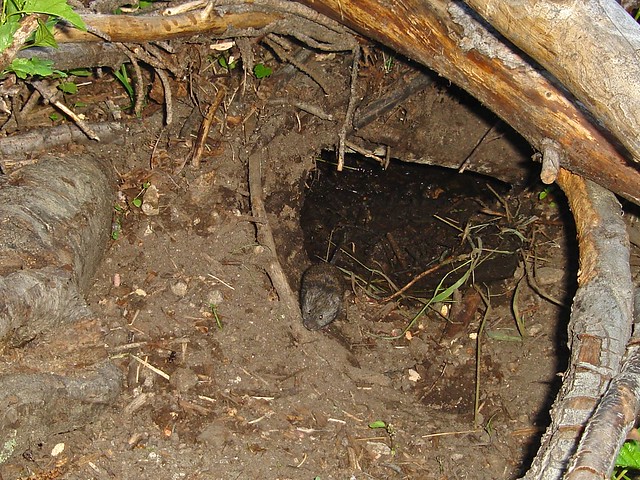

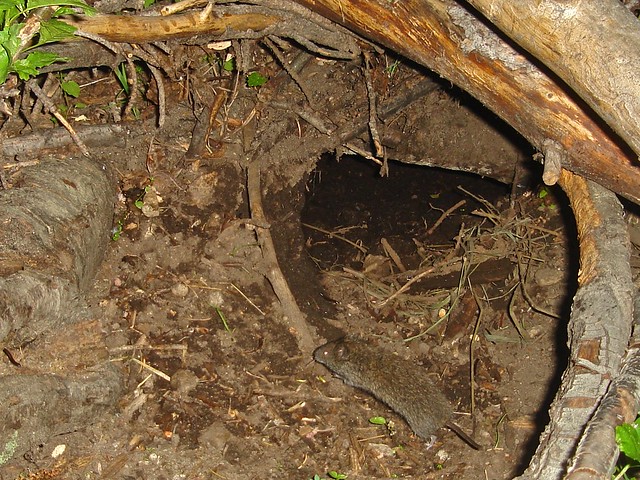
Along with the vole, a truly long-tailed rodent, a Western Jumping Mouse, Zapus princeps, was also living in this Aplodontia burrow. And not only does the Zapus have a tail to make voles blush, but also check out that too-cool-for-school racing stripe:
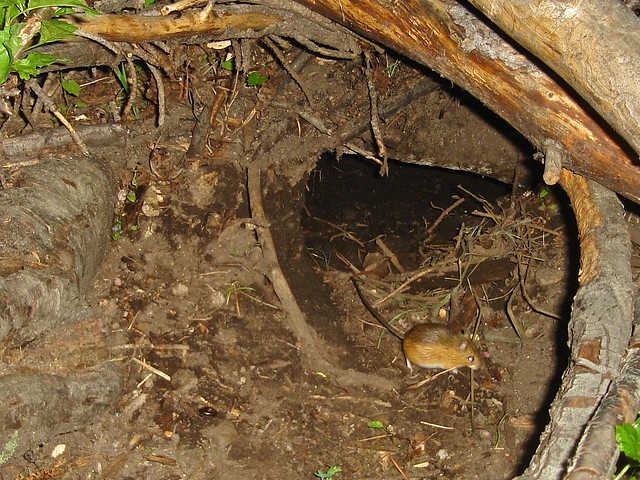
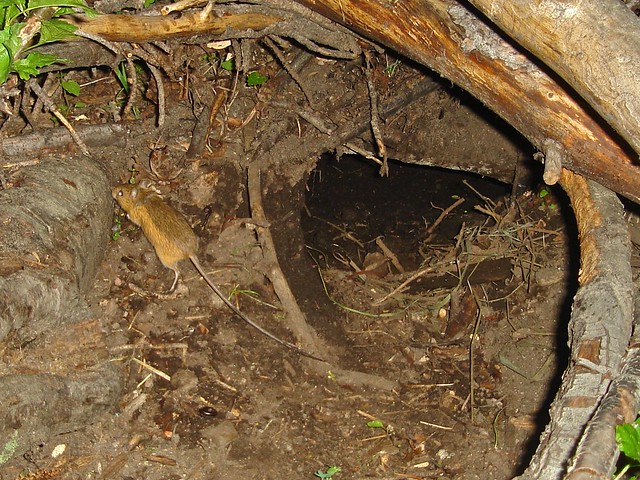
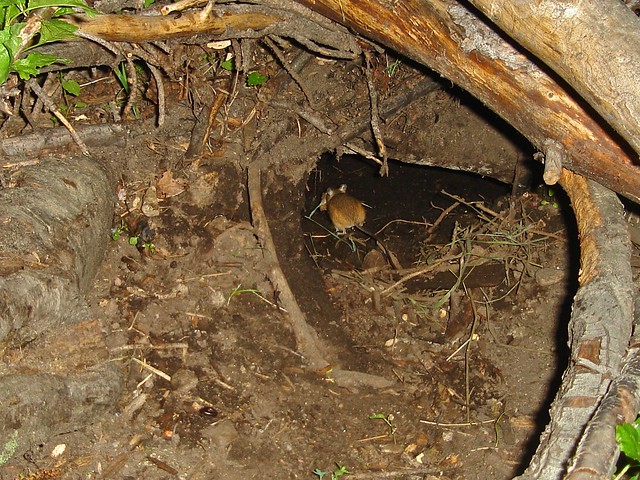
Kind of looks like the rodent equivalent of a fauxhawk.
Boomer's throw piles of dirt and debris also drew a variety of species.
Aka, Dumpster Divers.
What we think is a Wood Peewee, Contopus sordidulus, was the first bird to show:
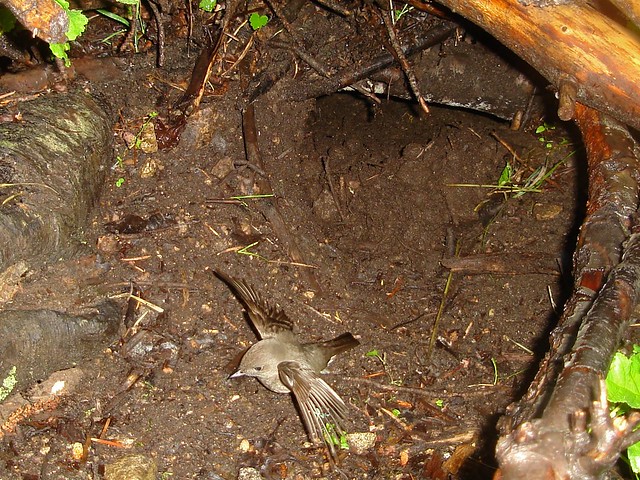
Followed soon after by a stunning male Evening Grosbeak, Coccothraustes vespertinus, whose formal wear makes him nice and easy to identify:
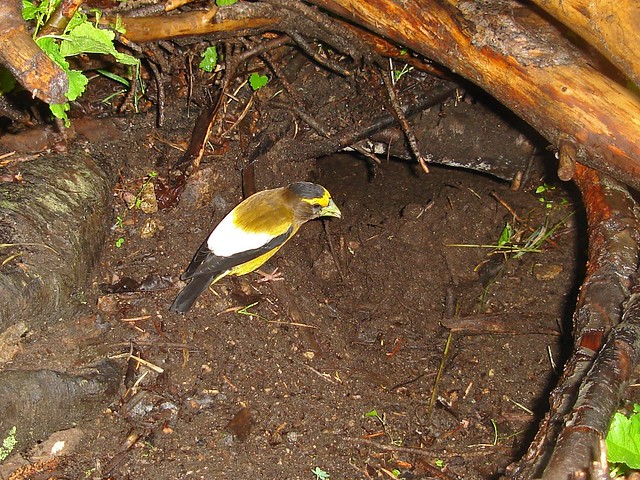
Always a facemelter, as Seagull Steve would say.
A Short-tailed Weasel, Mustela erminea, was next to pop up. And a major league lifer for me. Weasels are sooooo tough to get on cam traps - they never hold still.
The weasel is less of a dumpster diver and more of tunnel terror, and is likely looking for the jumping mice and voles and any other small prey it can surprise.
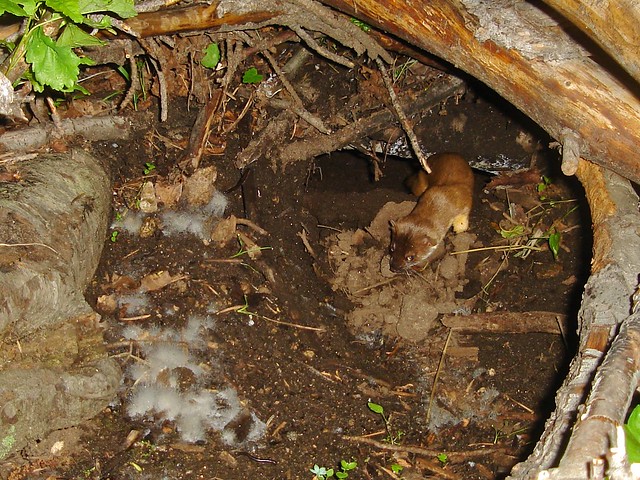
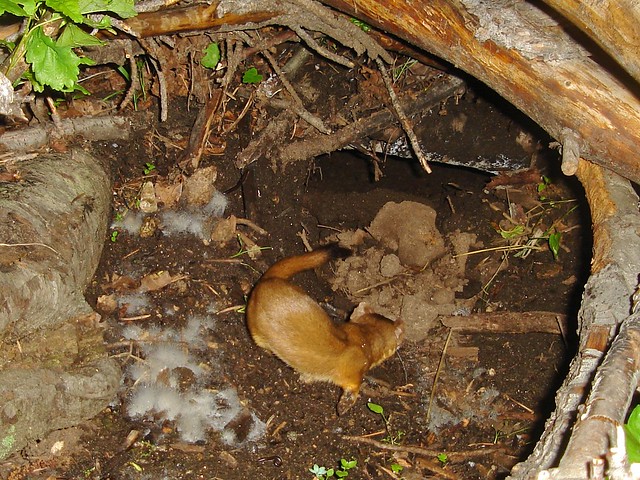
In fur trapper's parlance, I believe the above would be officially called a Stoat. But when the little cutey takes on its winter white fur, the value multiplies, and they get a new name: Ermine. Understandable, of course. "Stoat coat" just doesn't have the same ring to it.
After Boomer did some more tunnel churn, a second vicious predator showed up - a shrew. Not sure if the little monster is living in the tunnels, or just feasting on the various millipedes and like coming out of it each night.
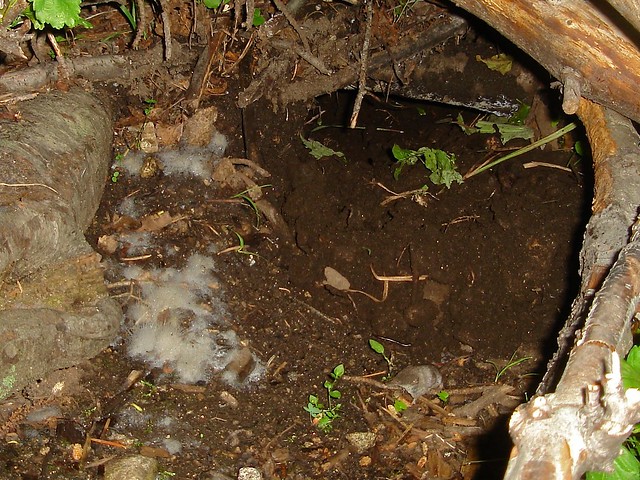
Appears to be a Vagrant Shrew, Sorex vagrans, but there are 4 species in the area and shrews are notoriously tricksy to ID.
The next mammal to show was a Long-eared Chipmunk, Neotamias quadrimaculatus, that really dove in deep...
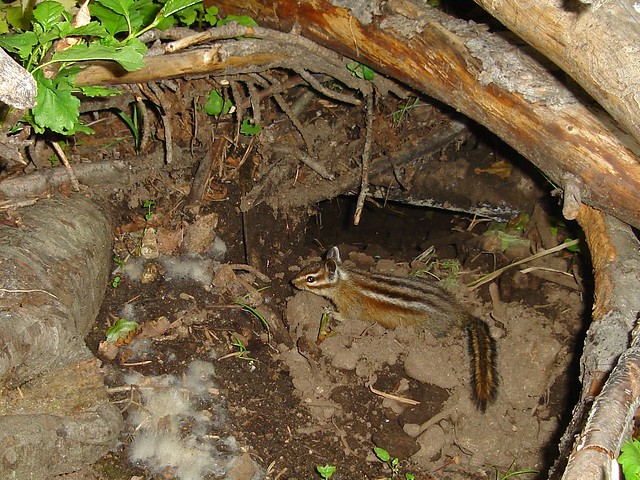
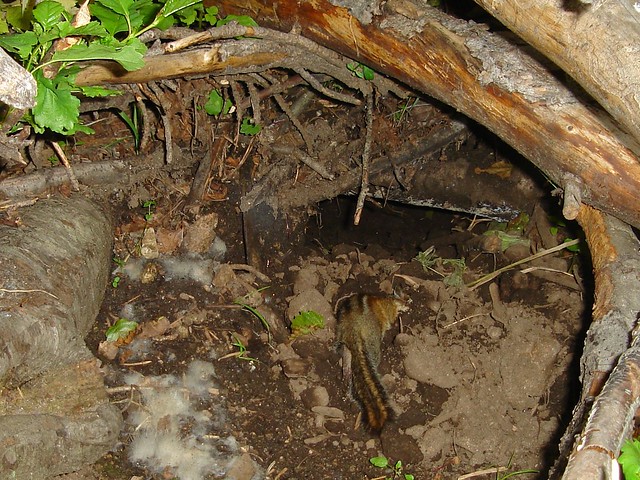
A male Western Tanager, Piranga ludoviciana, poked about as well.
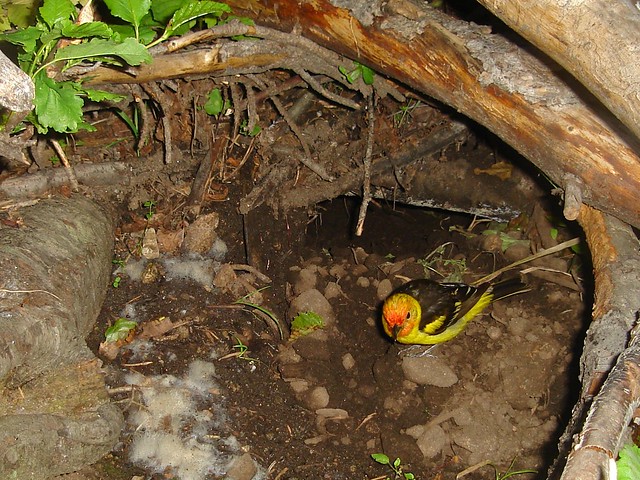
And after the tanager, the grosbeak nicely returned to give some beauty shots sans flash:
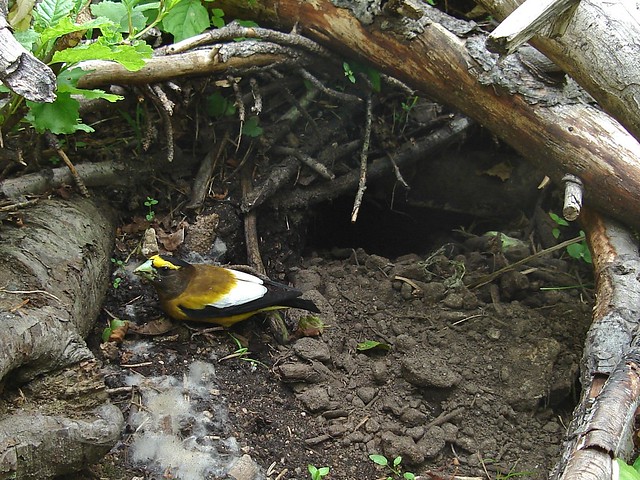
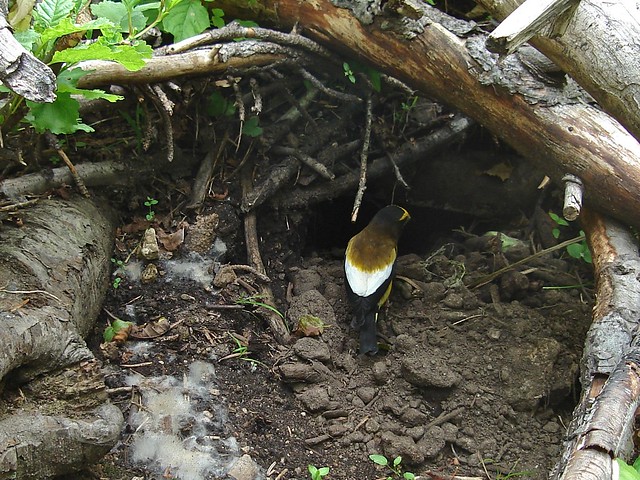
But ole grosbeak better watch out - or else he might catch a weasel in the face.
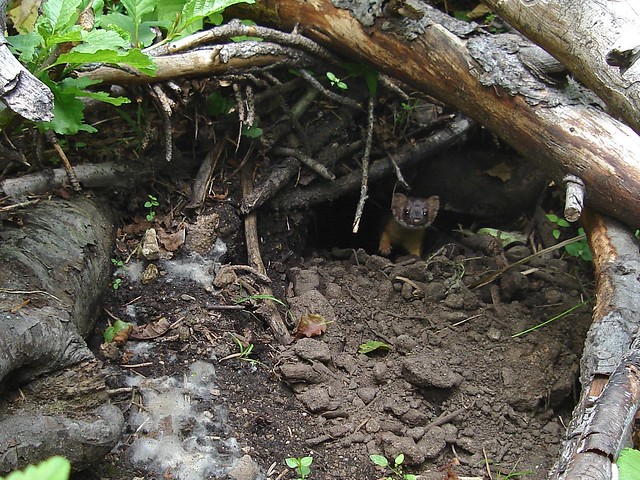
Or, should that be "stoat in the snout"?
====
References:
- Nature of a Man (this blog) - Boomer the Bulldozer
- E. W. Jameson Jr. and Hans J. Peeters - Mammals of California
- Mark Elbroch & Kurt Rinehart - Behavior of North American Mammals
- Wikipedia - Keystone species
- Wikipedia - Long-tailed Vole
- Wikipedia - Western Jumping Mouse
- Wikipedia - Stoat
- Wikipedia - Mountain Beaver
- Camera Trap Codger - 2012 Camera Trapping Workshop
- Camera Trap Codger - An attempt at subterranean video
- Camera Trap Codger - Video vision in the tunnel, Part 2
- Camera Trap Codger - The Showt'ls Underworld
- Camera Trap Codger - Showt'ls Underworld, Part 2
- Camera Trap Codger - Showt'ls Underworld, Part 3
- Camera Trap Codger - Showt'ls Underworld, Part 4
- Camera Trap Codger - Annual Aplodon Photos
- Camera Trap Codger - Hark, the Mountain Beaver
- San Francisco State University Field Campus
- Nature of a Man (this blog) - A Fossorial Living Fossil

That was one prolific cam trap site! What a treasure trove of activity you captured! Interesting text about Aplo's tunneling techniques. Facinating post!
ReplyDeleteMan. Not only is that a DELIGHTFULLY diverse group, but each photo is SO PERFECTLY EXPOSED and sharp. Wow. Anyone new to this type of work may not know that extremely uncommon that is. YOU are the MAN! =)
ReplyDeleteSuper cool post & info. Thanks.
Nice job on the M. eminea! Great catch. Also love Zapus....I think it's my favorite little rodent in the midwest. We catch lots in our traps....
ReplyDeleteI somehow totally forgot about the weasel. Great job on that. I really like that last picture. Are all the time/date stamps correct when you go to the Flickr page? Just curious to compare to my trap that was a whole 25 feet away and only managed the Aplodontia.
ReplyDeleteYep - the exif timestamps in the photos on flickr is correct. The order above perhaps not exact, but close.
Delete